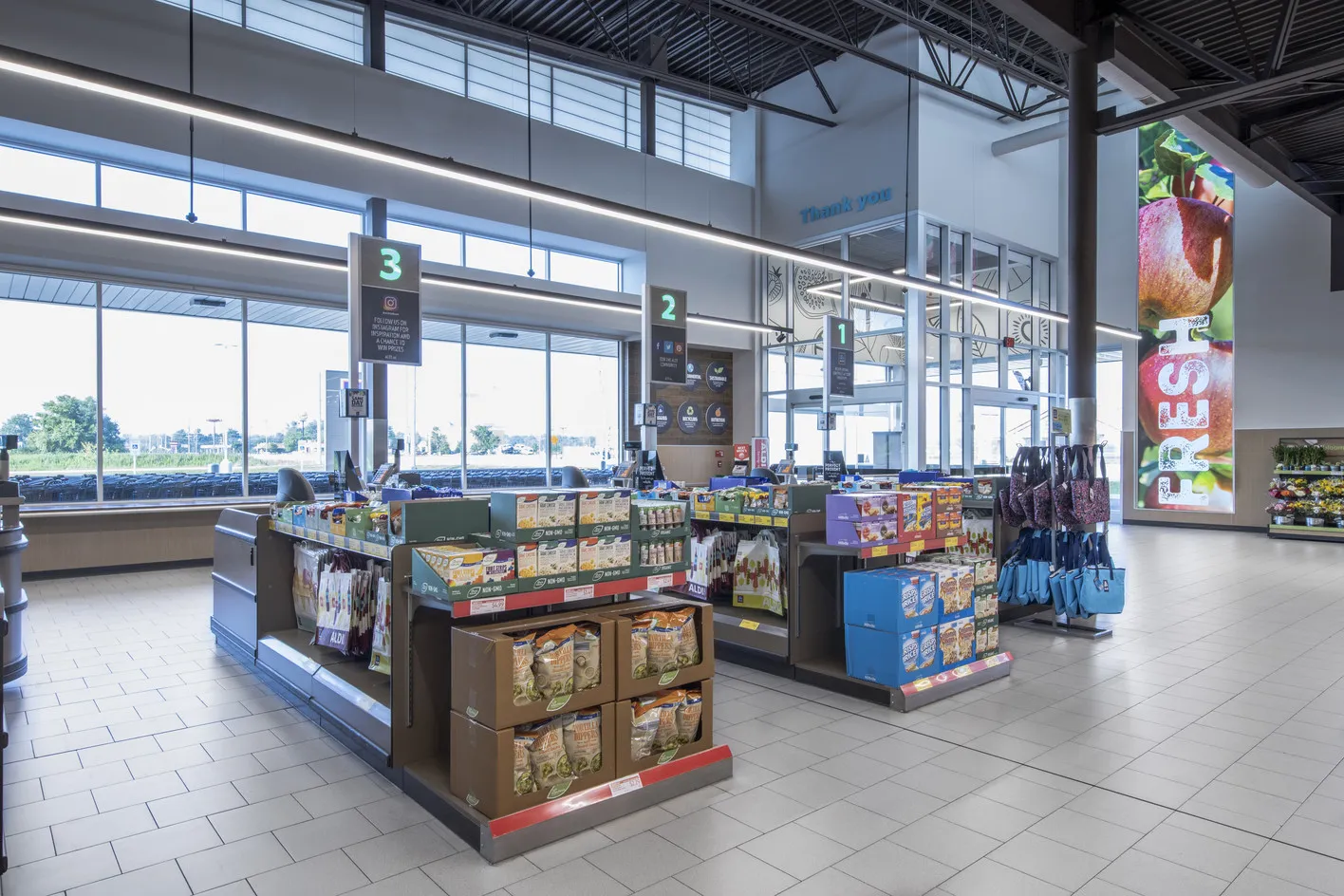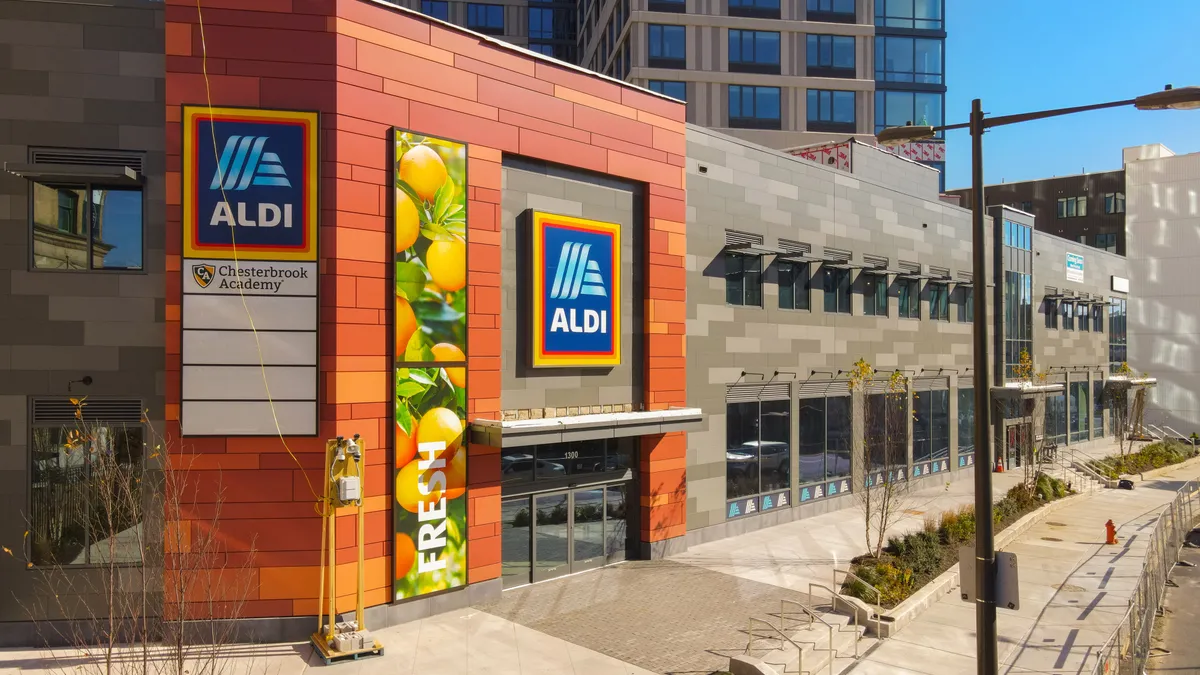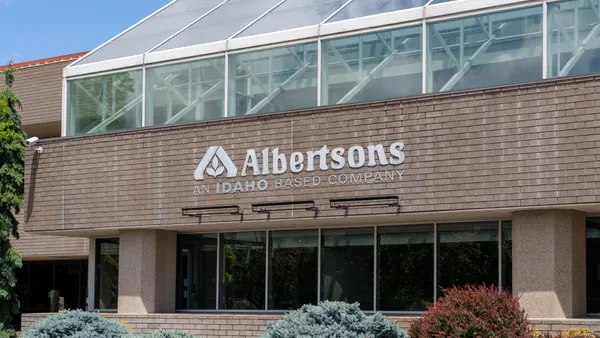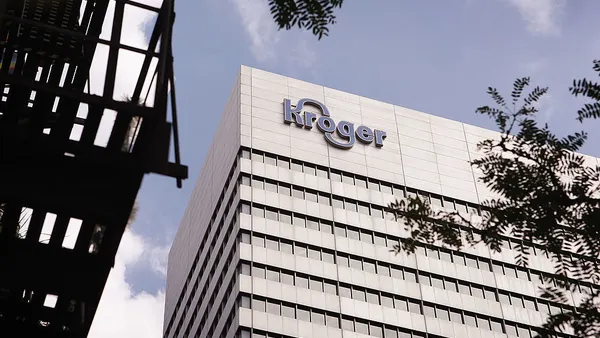Dive Brief:
- Aldi’s plan to buy Winn-Dixie positions the German discounter to sharply amp up its ability to compete in Florida, a region where the company already has a powerful presence but remains behind Publix, according to a new report from market research firm Dunnhumby.
- The combination, if approved by regulators, could be especially potent because it would bring together Aldi’s focus on low prices and private labels with Winn-Dixie’s strong relationships with national brands and established loyalty program, Dunnhumby said.
- A key benefit for Aldi in buying Winn-Dixie is that the chains each serve different shopper requirements but are both “likely going to continue to be a necessity” as the supermarket industry settles into post-pandemic norms, the researchers indicated.
Dive Insight:
Regardless of how Aldi decides to handle the hundreds of Winn-Dixie stores is posed to acquire from Southeastern Grocers, the fast-growing discounter’s decision to buy a chain of traditional supermarkets puts it in a position to further disrupt the grocery industry — not only in Florida, but across the country, Dunnhumby said in the report.
Dunnhumby noted that even with more than 200 stores in Florida, Aldi has a long way to go to reach the market penetration Publix enjoys. Publix, which has four times as many locations, has one store for every 25,000 people in the state, while Aldi currently has a location for every 100,000 Florida residents, the report noted.
In addition, every Aldi store in Florida is within four miles of a Publix, while Walmart and Dollar General both have locations within a short drive of the vast majority of Aldi stores in the state, Dunnhumby said.
But even against that level of competition, Aldi’s strong reputation as a discounter, buying power and popularity with shoppers means rival grocers should take careful note of Aldi’s strategy, the report said.
“Retailers everywhere should be examining their private brand, pricing, assortment, digital, and real estate strategies in response to Aldi’s move, to build protective moats for an uncertain future,” the researchers noted in the report.
Other research also underscores the significance of Aldi’s move to absorb Winn-Dixie. According to data released last week by polling firm YouGov, Aldi’s rate of brand awareness among shoppers in the Southeast is only slightly behind that of competitors like Publix and Kroger. In addition, Winn-Dixie runs neck-and-neck in terms of name recognition with Publix in the region, presenting Aldi with an opportunity to quickly boost its position through its planned acquisition of the banner, YouGov said.

Dunnhumby also delved into the dynamics separating Aldi from Lidl, which the researchers said could eventually emerge as a disruptive force in the U.S. grocery market because of its strong mix of low prices and personalization technology.
A key difference between the paths the two German chains have followed in the U.S. is that the Aldi arrived in the country at a time when the grocery market was considerably less competitive, which allowed it to put down roots without having to deal with the high level of disruption Lidl has confronted in recent years as a newcomer, Dunnhumby pointed out. Aldi opened its first U.S. location in 1976, while Lidl didn’t follow suit until 2017.
According to the report, Walmart, Kroger and Ahold Delhaize — along with Aldi — greeted Aldi by sharply lowering prices by an average of 10% in areas where Lidl chose to place stores, blunting the grocer’s ability to connect with shoppers. In addition, Lidl has had to navigate the waves of digital investments Amazon unleashed among grocers with its 2017 purchase of Whole Foods, a distraction Aldi did not face when it was concentrating on introducing itself to U.S. shoppers decades ago, Dunnhumby said.
Also, Lidl’s decision to open its first stores in regions where Aldi already had a strong presence instead of targeting areas where the company could have steered clear of direct competition with its well-known rival compounded the challenges Lidl has faced, Dunnhumby pointed out.
“In an intensely competitive landscape, where a target has been put on your back and customers are putting you under extra scrutiny as they get familiar with you, slight misalignments are going to matter,” the firm stated in its report.














